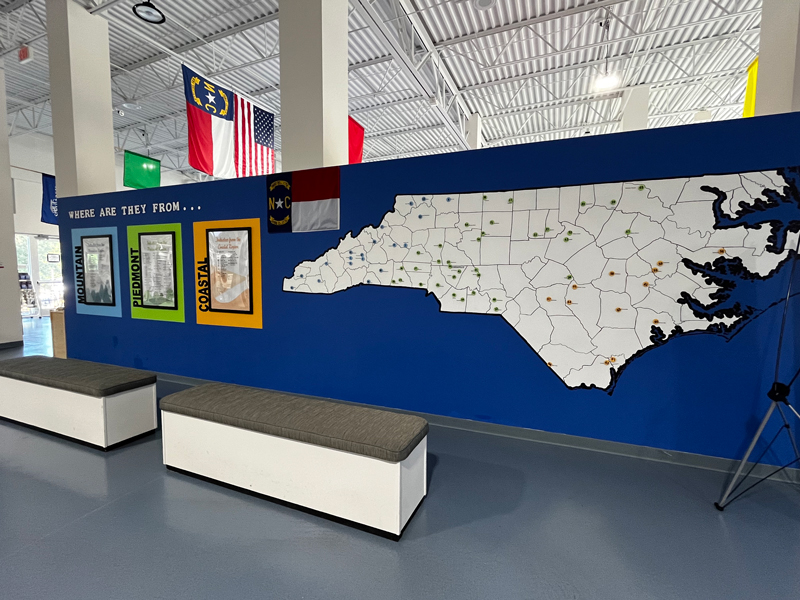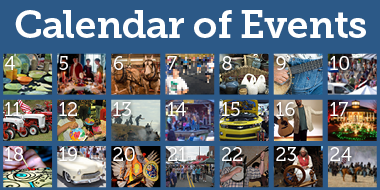- Home /
- Travel /
- Carolina Adventures /
- Celebrating Our Musical Heritage
Celebrating Our Musical Heritage
Local musicians are honored at the NC Music Hall of Fame
By Renee C. GannonDriving south on I-85, if you blink you may miss the brown information sign located between Salisbury and Kannapolis announcing the exit for the North Carolina Music Hall of Fame. But don’t blink! Follow the sign to the state’s musical treasures and you won’t be disappointed.
Originally opened in 1994 and Thomasville-based, the hall moved to Kannapolis in 2008 then to its current home in 2014 when Mike Curb, a veteran record producer and owner of Curb Music (and 2009 inductee), built a 20,000-square-foot museum for his motorsports organization’s team cars and memorabilia, as well as highlights from his record production company. He also formally opened a North Carolina Music Hall of Fame in the space to recognize the state’s musical roots of the past, present and future.
Six new names were recently added to North Carolina’s musical map: Scotty McCreery, Loudon Wainwright III, Bill Curtis, Fetchin’ Bones, George Beverly Shea and Betty Davis. The hall now recognizes 132 souls of sound as members.
According to Executive Director Veronica Cordle, the hall continues to add four to eight new members each year, and will continue to venture into all music genres, including progressive, rap and hip hop. Each inductee’s exhibit features a mix of wardrobe, signed albums, sheet music, handwritten lyrics, instruments, photos, posters, awards and other memorabilia.
One inductee, funk musician and Kannapolis native George Clinton, stopped by the hall recently and announced he would send more for his exhibit, including a few of his iconic outfits. A surprised and delighted Veronica plans to expand his exhibit for these personal additions.
Musical legacy


The gold records on the wall in the lobby and the large NC map dotted with names and locations give you a quick idea that you are entering a musical journey.
The gold records on the wall in the lobby and the large NC map dotted with names and locations give you a quick idea that you are entering a musical journey. The hall exhibits are grouped by genre — street signs mark each genre’s location, a “city grid” that leads one to Jazz Alley, R&B/Beach Music, Country Road, Bluegrass Street (one of the most extensive collections), Pop & Rock Crossing, Hall of Famers, Music Makers and Gospel Way.
Qualifications to be included in the hall are not limited to birth right. An inductee must have a significant connection to North Carolina, not necessarily a native, but one who studied here, started a career or other connections to the state’s music industry. The inductee must also have had a sustained 10 years of national or international popularity.
Six American Idols are now in the hall, including the newest inductee, Scotty McCreery. Inductees hail from a broad range of genres and music professions, including singers, songwriters, producers, musicians, inventors and executives.
At any given time, about 100 inductees are featured in the museum. Veronica wished all inductees could be featured, but the hall team continues to develop a rotation policy to ensure all inductees are featured.
“Creating the exhibits are time- consuming and often brutal,” quipped Veronica. Some items donated, such as outfits, require a little ingenuity to work, such as finding a child’s mannequin for singer Betty Davis outfits, she explained.
What can you learn? Some interesting tidbits, such as: NC songwriter and musician Arthur Smith wrote “Feudin’ Banjos,” later to be known as “Dueling Banjos” in the movie Deliverance, but the song was used without Smith’s permission. He later received songwriting credit and royalties. Charles Poole’s unique finger-picking style culminated from a baseball injury. Find out why 9th Wonder often kicks off one shoe.
“You know the names, but often you don’t know their life or story,” Veronica said. “These exhibits give you a sense of the person behind the music.”
About the Author
Renee C. Gannon is the senior associate editor of Carolina Country.
-
More adventures with North Carolina history









